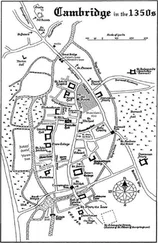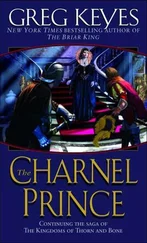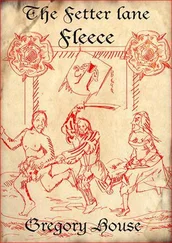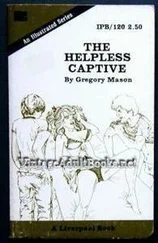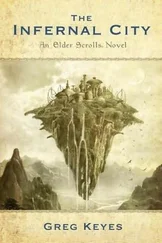And even if Paul Jimenez’s friends had known about his online persona as RounDaWay17, The Sculptor had long ago taken care of that loose end-had long ago hacked into Jimenez’s e-mail account, the most recent activity of which would have shown Jimenez taking care of business as usual from an IP address at the public library in Dayton, Ohio.
Yes, The Sculptor was very, very thorough.
It was late in the afternoon when Cathy received the call from the Cranston Police on her cell phone-an unknown number she immediately muted into voice mail. She and Markham were on their way to an interview-a scenario she had become quite familiar with since Markham ’s return from Quantico, one quite different than what she had expected via her television crime drama education. The people Cathy and Markham spoke to could use a good scriptwriter; they were not nearly as articulate or helpful as those witnesses on TV-who, after a string of three or four of them, always led the authorities straight to their man. Indeed, the handful of people who the FBI questioned with regard to the Gabriel Banford connection did not help at all. And the investigation into any other possible murders/disappearances that fit The Michelangelo Killer’s victim profile, as well the leads derived from the forensic evidence on which she and her new colleagues at the FBI Field Office in Boston had been briefed two weeks earlier, had all so far turned up nothing.
All, that is, except one curious clue: the Carrara marble dust found in The Michelangelo Killer’s paint.
“Except for the Carrara marble,” Markham said, pulling into the parking lot, “it seems almost as if The Michelangelo Killer had all that other stuff just lying around. The amount of formaldehyde, of acetone, the silicone rubber needed for the Plastination process-never mind the drugs-strange that we’re not able to get a lead from any of it, where this guy got hold of the large quantities of chemicals and equipment he would need to get his job done.”
“Unless he made the chemicals himself,” Cathy said. “Unless he distilled them from products that were much more readily available.”
“Yes. Like the acetone-the primary ingredient in paint thinner and nail polish remover. But then there’s the formaldehyde. Not something you can pick up at Lowes or Home Depot. And from what I’ve read, not only does it have a short shelf-life, it’s much more difficult to manufacture from other base products-that is, unless we’ve got a chemist with a large lab on our hands.”
“This man is very bright, Sam, and very thorough. He knew that the first thing the FBI would look into would be the unusual forensic evidence-wouldn’t have used anything that could be traced directly back to him. And given the fact that The Michelangelo Killer has been active for at least six years, he could have acquired his equipment and replenished his chemicals gradually. He could have even broken into any number of funeral parlors and stolen just enough formaldehyde here and there so it wouldn’t be noticed. I mean, the time and planning it took to prepare and display his figures-it’s almost as if The Michelangelo Killer also planned on what forensic evidence he would leave behind.”
“Nothing is left to chance.”
“The Carrara marble dust.”
“Yes. An interesting detail that I have a feeling The Michelangelo Killer wanted us to find. Let’s hope this interview turns up something.”
Despite the inconvenience that Carrara marble was still exported all over the world and in many forms-from blocks of raw material, to cheaply fashioned souvenirs, to large pieces of exquisite detail-Rachel Sullivan stumbled upon a police report from three years earlier that would eventually provide the FBI with their first real lead, their first big break in the strange case of The Michelangelo Killer.
Reverend Monsignor Robert Bonetti, who would be celebrating his eightieth birthday in less than a week, had served as resident pastor of St. Bartholomew’s Church in Providence longer than any other in parish history-twenty-nine years by his count-and had no plans on retiring anytime soon. This was his parish, his neighborhood, for not only had he grown up only a couple of miles away on Federal Hill, the Reverend Bonetti had over the years repeatedly turned down opportunities for promotion in order to remain among his people. And even though “St. Bart’s” was staffed by the Scalabrini Fathers-a Roman Catholic Holy Order that traditionally transferred its priests from parish to parish every ten years or so-because of Bonetti’s age, his impeccable record, his outstanding work within the community, his expansion of the church itself, and his desire to go on ministering to the masses long after he could have retired, the Scalabrini Fathers made an exception in his case and allowed him to stay on at St. Bart’s for as long as he wished.
The tall and lanky priest met Cathy and Markham on the front steps of St. Bart’s-a much more modern-looking structure than the traditional Romanesque Neo-Gothic churches that dotted the working-class neighborhoods in and around Providence. Cathy, as a professor in Brown University ’s Department of History of Art and Architecture, immediately pegged the church as having been built-or at least renovated-in the late sixties or early seventies.
“You must be Agent Markham,” said the Reverend Bonetti, offering his hand. “Which means that you, my dear, are Doctor Catherine Hildebrant.”
“Yes, I am. A pleasure to meet you, Father.”
“Likewise-the both of you.”
“You spoke with Special Agent Rachel Sullivan on the phone,” said Markham. “She explained why we wanted to talk to you?”
“Yes,” smiled the priest. “Ostensibly about our Pietà . But you see, Agent Markham, I’ve been around long enough to know that things aren’t always what they seem. The FBI wouldn’t trouble themselves with a curious little theft that happened three years ago-that is unless they felt it was somehow connected to something much more important.”
There was nothing condescending in the priest’s tone; nothing sarcastic or off-putting. No, the Reverend Bonetti spoke with the simple sincerity of a man who did not wish to play games; a man whose gentle, bespectacled eyes and thick Rhode Island accent spoke of someone who had indeed been around long enough to know what’s what.
“This is really about that Michelangelo Killer, isn’t it?” asked the priest. “About what happened down there at Watch Hill?”
“Yes, it is,” said Markham.
For the first time the Reverend Robert Bonetti’s gaze dropped to the ground, his mind entirely somewhere else. And after what seemed to Cathy like an interminable silence, the priest once again met Markham ’s eyes.
“Follow me,” he said.
Once inside the dimly lit church, the good reverend led Cathy and Markham to a small chamber off the main church-the devotional chapel dedicated not only to a large pyramid of votive candles, but also to a series of marble statues that lined the surrounding walls. The statues were of various saints and were themselves also bordered by smaller stands of candles, and the sweet smell of scented wax made Cathy feel queasy. Behind the pyramid of votive candles, at the rear of the devotional chapel, Cathy and Markham were surprised by what they found: a large, exquisitely carved replica of Michelangelo’s Rome Pietà.
“Exactly like the one that was taken three years ago,” said the Reverend Bonetti. “That one had been donated by a wealthy family a number of years before I arrived here at St. Bart’s. It was hand carved to the exact proportions of the original, as well as from the same type of marble Michelangelo used five hundred years ago. Carrara marble, it is called. And as is the case with the statue you see before you, our other Pietà was made by a skilled artisan in Italy whose studio produces only a couple dozen statues per year-usually ranging in size, like this one, from about three to four feet high. His name is Antonio Gambardelli, and his statues are much more accurate, much more expensive than any other replicas on the market not only because of their attention to detail, but also because of their proportional accuracy. Indeed, at least three years ago, a Gambardelli Pietà of this size was valued at close to twenty thousand American dollars. I know this because whoever took our statue not only left us with instructions on how to replace it, but also left us the means to do so.”
Читать дальше

